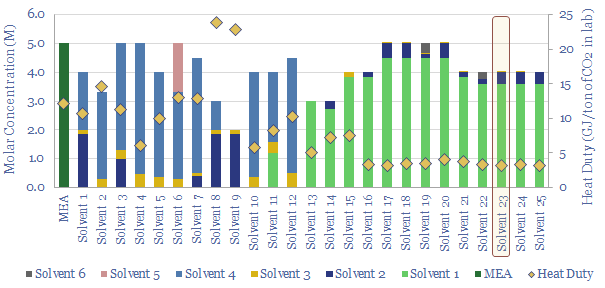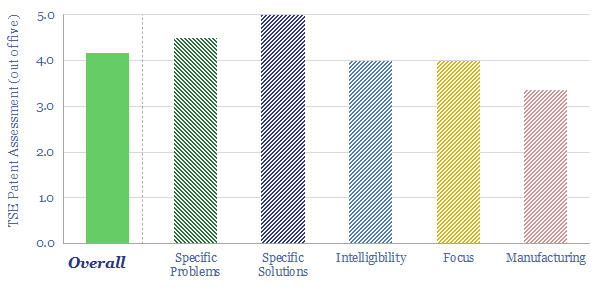Advantage Energy is a Montney gas and oil producer, which recently sourced a $300M investment from Brookfield to scale up its Entropy23 amine blend for natural-gas CCS. Entropy CCS technology has captured 90-93% of the CO2 at the first pilot plant at Glacier, Alberta, with 2.4 GJ/ton reboiler duty, which is 40% below MEA. This 7-page report summarizes Entropy patent details, confirming a moat around the technology, but three key points for de-risking.
Two challenges for post-combustion CCS have recently been in focus in our research. The first one is energy penalties of CCS (note here, data here). And the second one is amine degradation and possible release of toxic breakdown products to the atmosphere (note here).
One solution is to scrub the gas extensively before it reaches a CCS plant, including with a SO2 scrubber, SCR denox loop and electrostatic precipitator, which all add cost. Another solution is to prioritize relatively pure input streams and stable CCS solvents. For example we have recently looked at Aker’s JustCatch and Shell’s CANSOLV.
Advantage Energy, listed on TSX, has also been gaining attention in CCS markets, as it claims to have developed a solvent with low reboiler duty, low degradation rates. The Entropy CCS solvent has been tested at multi-kTpa scale at the Glacier gas plant in Alberta, and Brookfield has agreed to invest $300M in its scale-up (page 3).
We reviewed a highly detailed, 58-page patent from Entropy Inc in 2023, covering 25 different solvents that were tested in the lab, and scored the technology on our usual patent assessment framework.
Based on our Entropy CCS technology review, we can confidently guess what the solvent blend is (i.e., specific components, chart below), how and why it works, how degradation has been tested in the past, and whether there is a moat around the technology (pages 4-6).

Remaining challenges: what residual areas to de-risk for Entropy CCS technology? We outline three constructive findings, which decision-makers may wish to consider and explore. They are noted on page 7.
